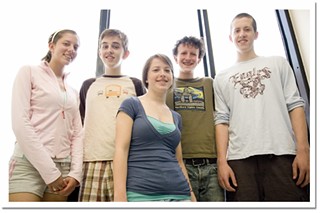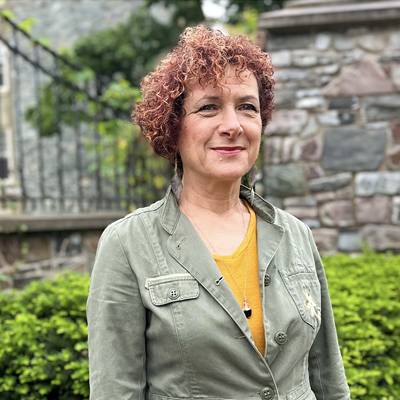Outgoing Queen Elizabeth High School student council president Brooke Stephen apologizes in advance for the state of the student council room—not that the partially tiled floor and the Swiss cheese drywall of the back entrance hallway forecasts luxury.
“I hope there isn’t a mouse in there,” Stephen says, turning to her friend Kara Grandy. “There was a mouse in math yesterday.”
Such is life at QE. Being in the school is like being at the bedside of someone on life-support.
The five graduating students in the council room won’t miss the rank smell, loose wires and broken microscopes. Still, they’ll miss their school. They hope long-standing rivals, QE and St. Pat’s, can forge a new identity at Citadel High.
“It’s not like we’re aliens to each other. We’re only two blocks apart. We share classes and many of us went to junior high together,” says grade 12 QE student Dave Hung.
Students and staff at both schools have been working on making the transition to Citadel High a smooth one. Three years ago a transition team was formed of both QE and St. Pat’s students. Their job was to hold as many shared events as possible.
“When we open the first day the students aren’t going in as two schools,” says current QE principal Kelly McLeod. “They’re walking in as one school, with one colour, one mascot and one staff.”
McLeod, who will be a vice-principal at Citadel High, says no special measures will be taken at the new school to control violence. It features a student support centre, a police liaison and cameras—the standard fare for a modern high school.
“It’s more the parents who are saying there will be problems. But it’s kind of like we’re there already,” says Stephen.
She’s more concerned, along with other QE students, that Citadel High won’t have the spirit and tradition that made their time at QE so special.
“It’s weird,” says Stephen. “There will be no memories. There won’t be grad pictures on the walls, no turkey bowl, no tradition at all in that building. It’ll be hard to get the emotional connection.”
Sofia Taheri, the outgoing St. Pat’s student president, has her own concerns about losing the small town comfort of their school. In 2006, St. Pat’s had only 381 students. Next year the St. Pat’s holdovers will be only a small fraction of the 1,200 students at Citadel.
“When you walk down the hallway at St. Pat’s you know everyone’s name no matter what grade you’re in. You know all the teachers too, even if you never had a class with them.”
QE’s Ben Proudfoot will be next year’s student council co-president. He wants to ensure students don’t get lost in the crowd, which could lead to behavioural problems. To prevent isolation among students, Citadel High opens with Launch Week—a sort of frosh week where everyone’s a freshman. There’s also a plan to supply students with maps and keep them informed about school happenings.
“People can’t get comfortable with each other if they’re not comfortable in their own situation,” says Proudfoot.
A sign of the vibrant student life that could come about in Citadel High: St. Pat’s and QE students alike point to the theatre as the foundation for the new school. But when the school opens in September, there won’t be one.
“If there isn’t a theatre that will be a big downfall,” says Stephen. “It won’t just take away from the school; it will take away from the whole community.”
Proudfoot points out the absence of a theatre won’t be significant at first, but it has the potential to be a major problem. It’s something students from both schools can agree on, and fight for.
Jay Lugar is part of the community capital campaign to help finance an on-campus theatre. He says the lack of one is a huge step backward. The good news is the campaign is about half-way to its $2.2 million goal.
“We’re not prepared to expect a school without a theatre,” says Lugar. “The fact that the community is aggressively pursuing this is a reflection of the sentiments the students have all expressed.”











